THREE BEAUTIFUL QUINCES
Two Hardly Edible Quinces
A lot people wonder about eating those orbs hanging from quince bushes. After all, everyone has heard of eating quinces, even if few people — these days, at least — have actually tried them.
In most cases, the answer to the question about whether you can eat the fruit depends on how hungry you are. The reason is because most of the “quinces” that you see are what are called “flowering quinces” (Chaenomeles spp.), grown mostly as ornamentals. 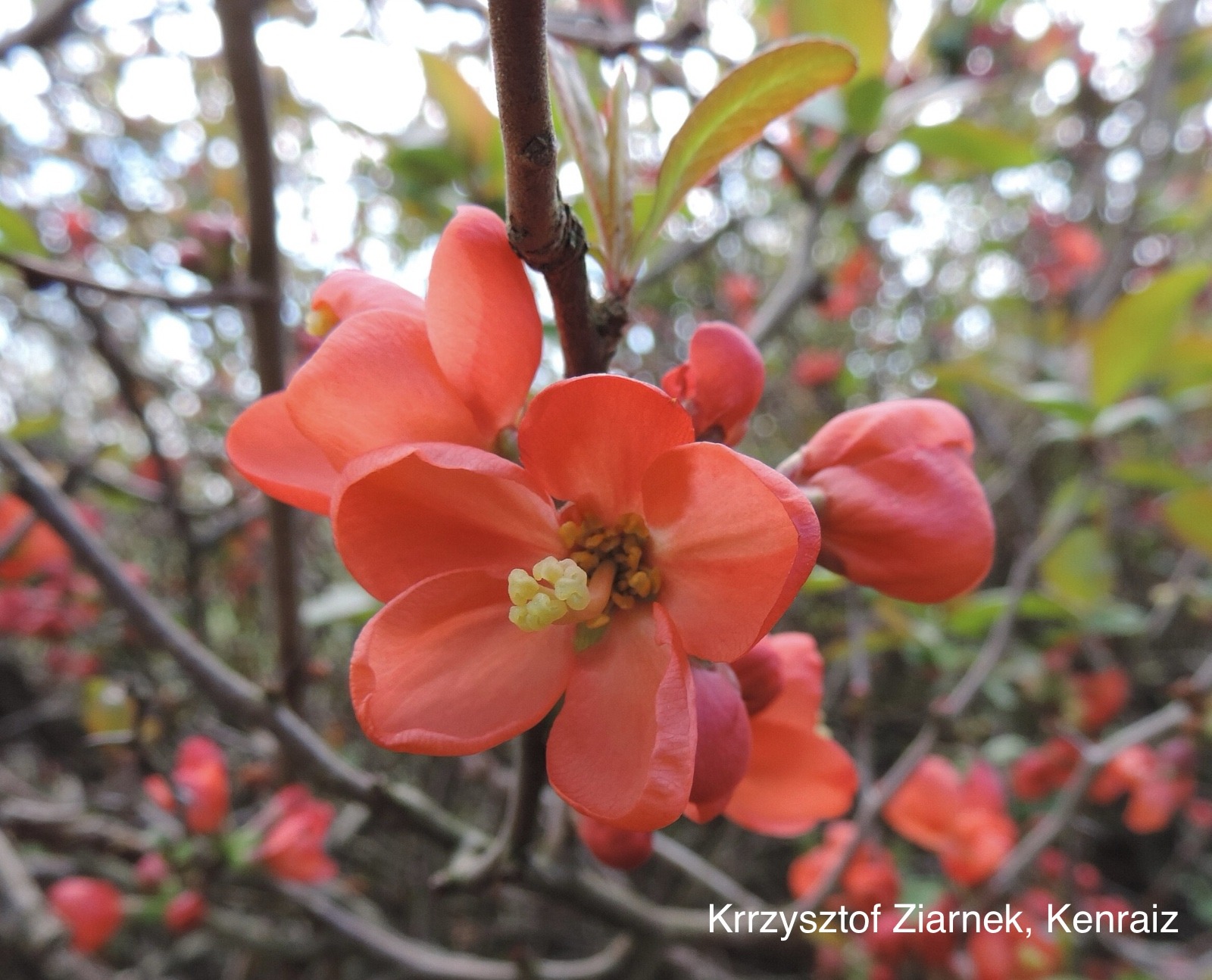 You undoubtedly noticed and admired this plant way back in early May, when large salmon-pink, scarlet, or sometimes white blossoms graced the thorny tangle of branches. The leaves, emerging reddish in spring and then turning glossy green also are attractive, but it is the spring flowers that bring this plant its one week of glory.
You undoubtedly noticed and admired this plant way back in early May, when large salmon-pink, scarlet, or sometimes white blossoms graced the thorny tangle of branches. The leaves, emerging reddish in spring and then turning glossy green also are attractive, but it is the spring flowers that bring this plant its one week of glory.
(A “flowering quince” could be any one or a hybrid of four species of Chaenomeles, which includes the species cathayensis, japonica, speciosa, and thibetica, all from Asia. The most common hybrid is that of japonica and speciosa.)
The fruits of flowering quince, yellowish green with a hint of red, have piqued your interest, eh? Pick one and you will feel that it is rock hard. You could get your teeth into it, but don’t bite it — the flavor would pucker your lips horribly due to their mix of astringency and sourness.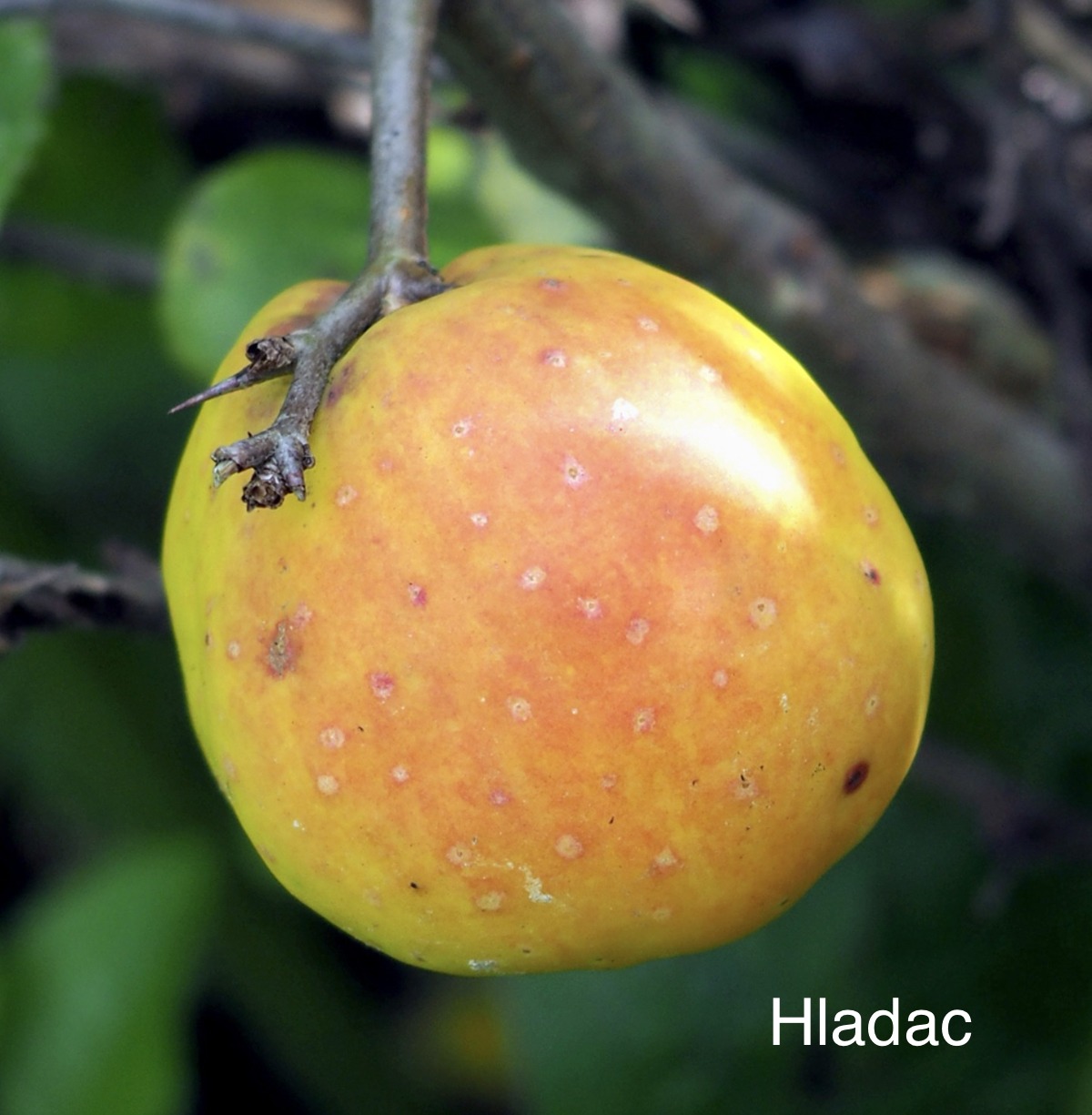
The fruits do have spicy aroma, though, and if you want to eat them, boil them in a sugar syrup and make jam. Personally, I think the fruits are better used stuck with whole cloves and hung on a string to perfume a closet.
Another flowering quince, this one called the Chinese flowering quince (Pseudocydonia sinensis), bears similar fruits, except that they are yellow and larger.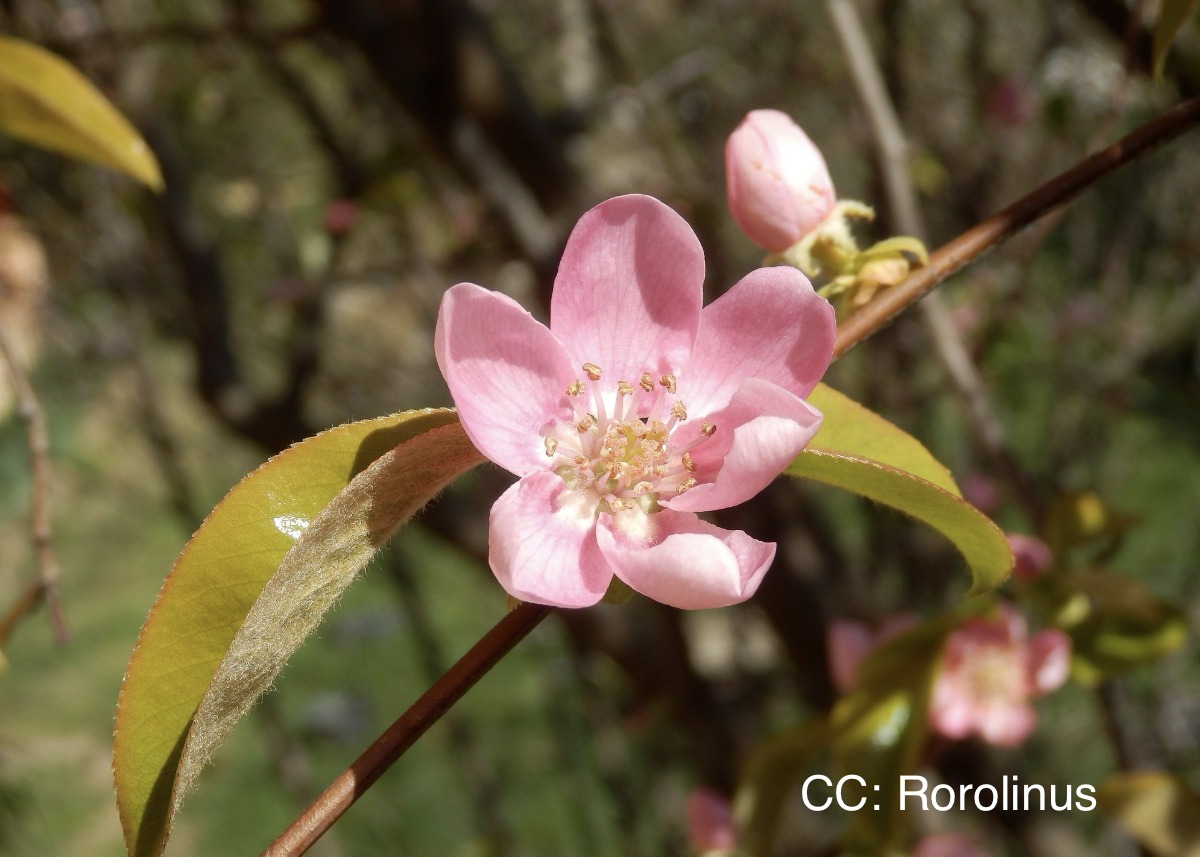 This flowering quince also is planted mostly as an ornamental, not only for its pink flowers, but also for its bark which becomes a patchwork of gray, green, and brown, much like sycamore.
This flowering quince also is planted mostly as an ornamental, not only for its pink flowers, but also for its bark which becomes a patchwork of gray, green, and brown, much like sycamore. 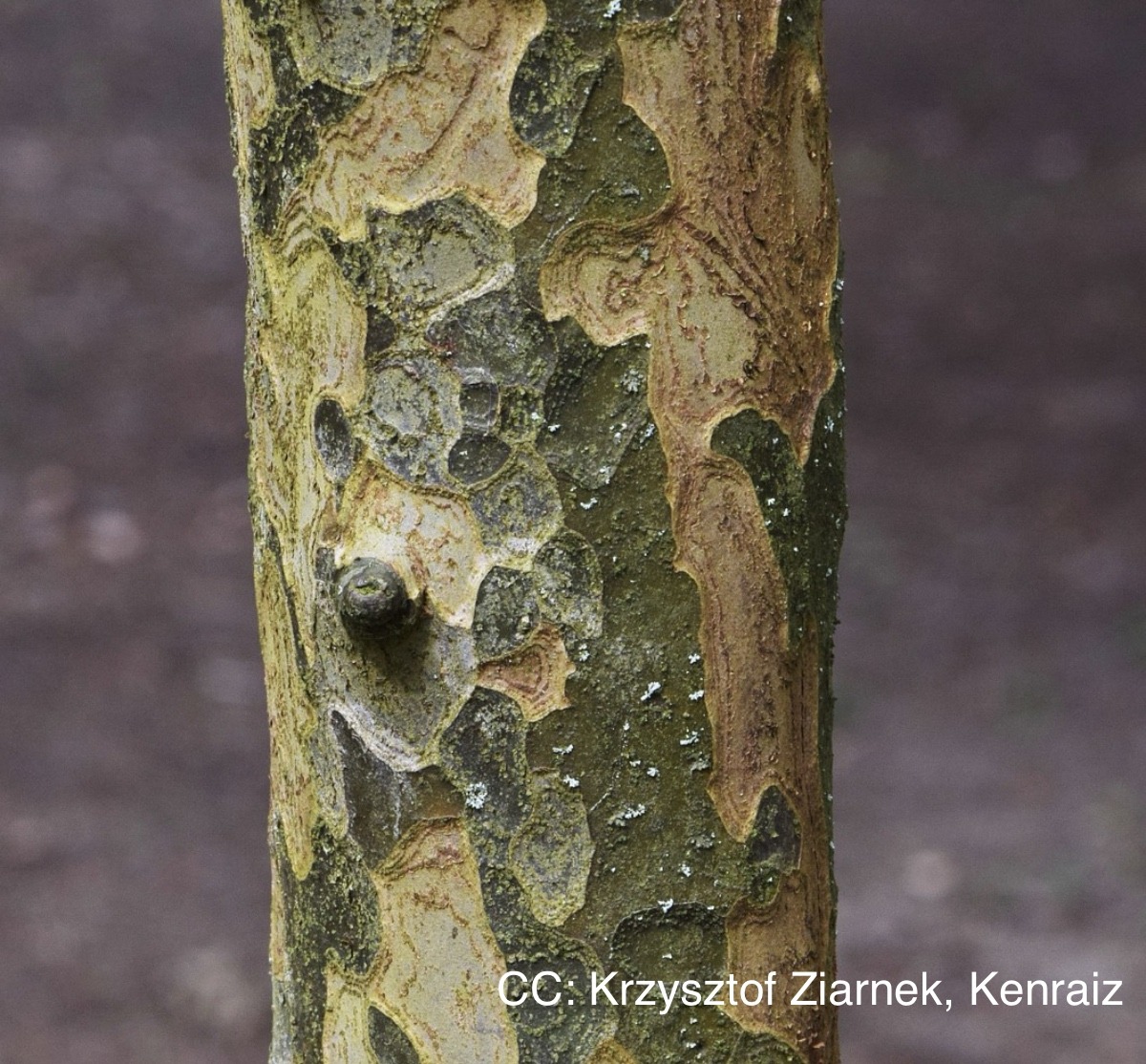 And the sweet, intense aroma of the ripening fruit in late fall.
And the sweet, intense aroma of the ripening fruit in late fall. 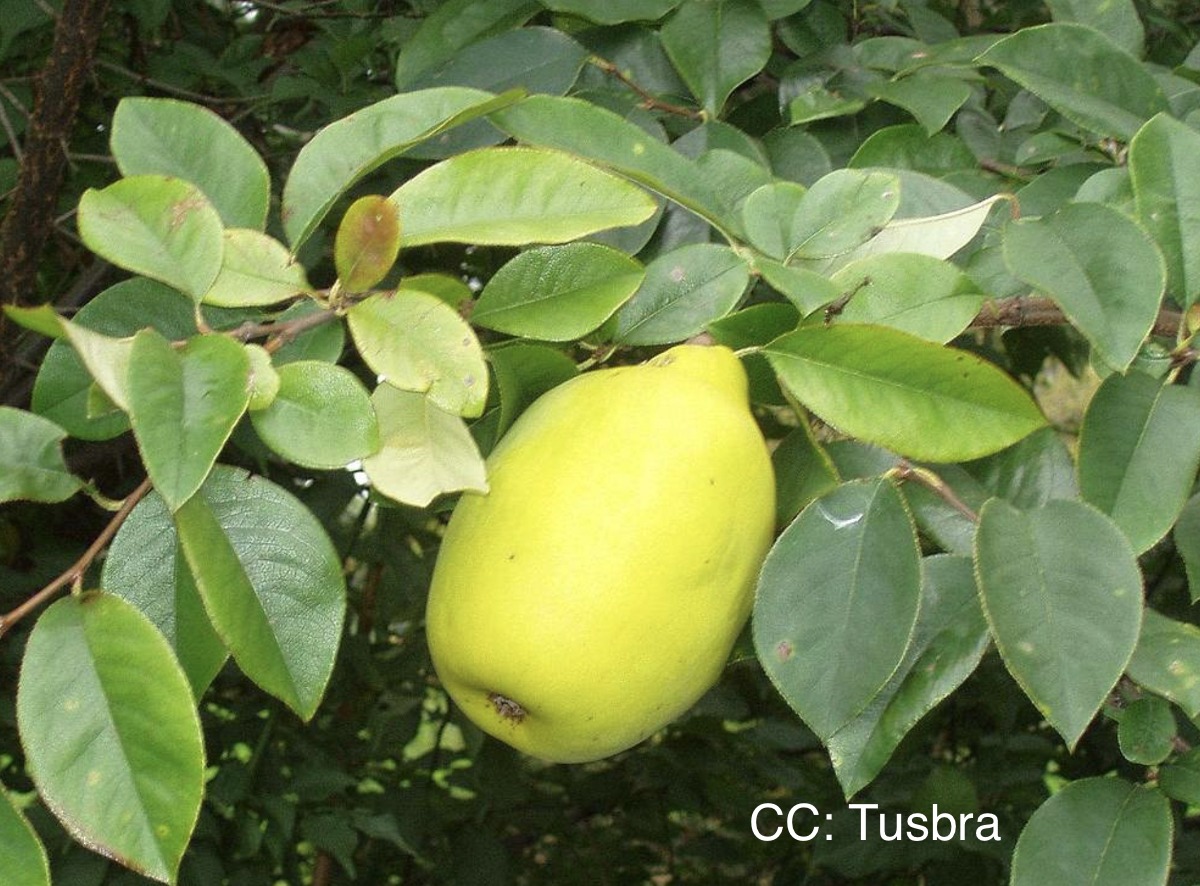 This quince’s planted range is more limited because it’s rarely planted and it barely survives where winter temperatures drop much below zero degrees F.
This quince’s planted range is more limited because it’s rarely planted and it barely survives where winter temperatures drop much below zero degrees F.
One Delectable Quince
Much more edible than either of the flowering quinces is true quince (Cydonia oblonga), the quince of antiquity. This is the quince that is grown mostly for its edible fruits, which look nothing like those of the flowering quinces. True quince fruits are the size of softballs, shaped like a combination of apple and pear, and covered with a fuzzy, bright yellow skin. Sort of like a fuzzy, Golden Delicious apple on steroids. 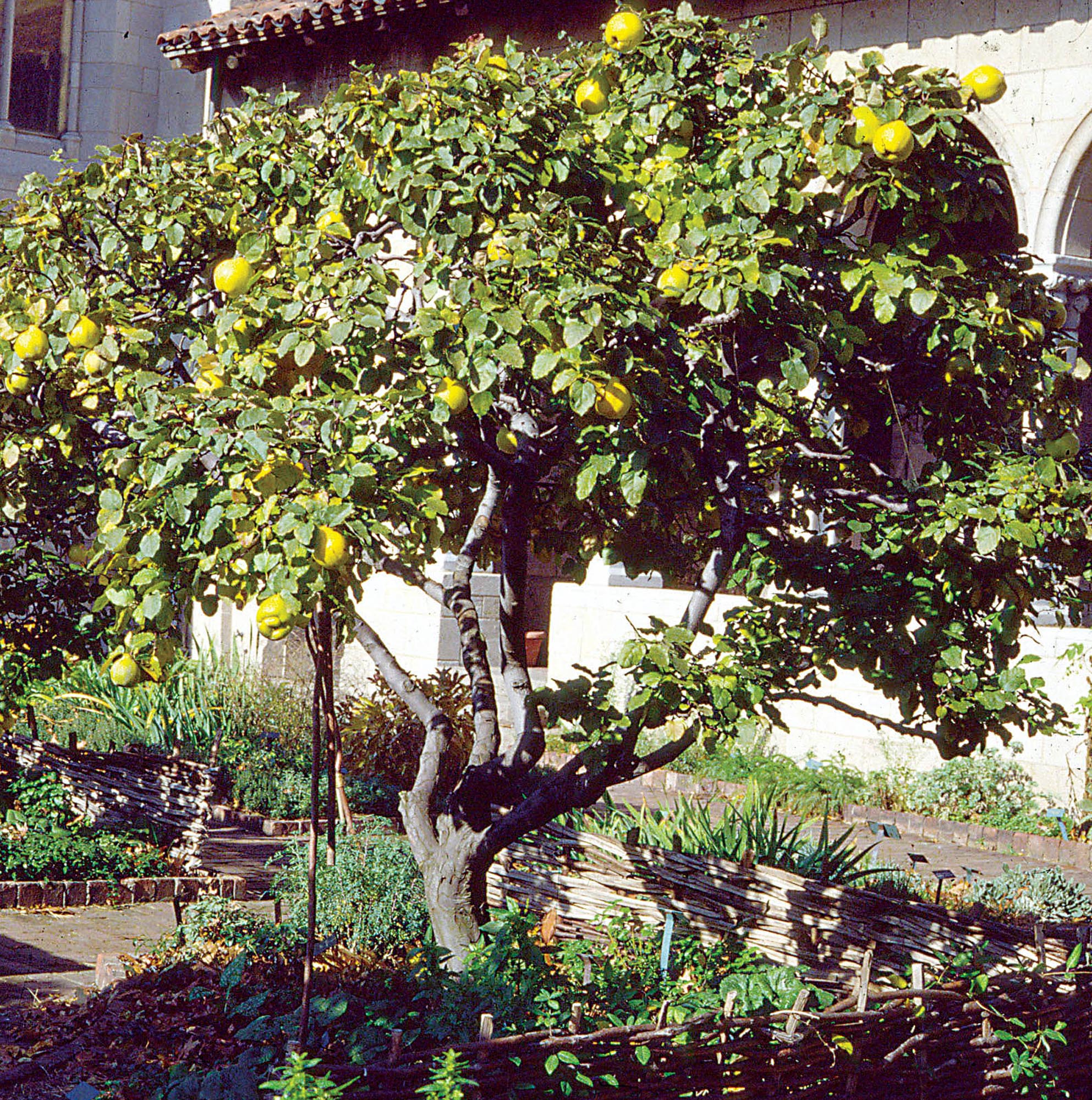 Quince is a fruit that has been cultivated since antiquity, and there are a number of varieties, the most popular being Pineapple, Champion, and Orange.
Quince is a fruit that has been cultivated since antiquity, and there are a number of varieties, the most popular being Pineapple, Champion, and Orange.
Although true quince is the quince usually grown for its fruits, don’t take a bite of this one either. It has the texture of an apple, but is a bit too tart for most people to crunch fresh into their mouth. But cook some up with sugar — not too much — and you have a delectable, tangy sauce or jelly. Or add a portion of this fruit to add pizazz to an apple pie or a batch of applesauce. The white flesh takes on a beautiful pink hue after cooking.
Some quince varieties are (allegedly) edible raw, among them Crimea quince, also called Krymskaya, and Aromatnaya. Slice them very thin for fresh eating. I was not impressed by the ones that I tasted raw, although cooked with a bit of some sweetener they are delicious.
True quince is less flamboyant but every bit as pretty as the flowering quinces.With just a few main stems or trunks, true quince has a growth habit that might be described as that of a small tree, one whose limbs, with age, take on a wizened, craggy look. It’s a good tree even for a small yard because it doesn’t need a mate to cross-pollinate for fruit, and it never grows more than about 10 feet tall.
Years ago I planted true quince. It grew and bore quickly. Unfortunately, some of the leaves became blackened as if by fire. I suspected fireblight disease, a deadly disease of many plants in the Rose Family, including apple and pear, of which I grow many varieties.
So that quince is long gone. Fireblight can be controlled if all blighted stems are cut back at lease six inches below disease (sterilizing shears between cuts) and cankered stems are removed in winter. I didn’t want to take any chances.
Edible and Beautiful
True quince puts on two shows each year. The first is in late spring, when large, solitary, white blossoms unfold along its branches. These blossoms often go unnoticed in spring because of all the other white flowering trees and shrubs of that season.
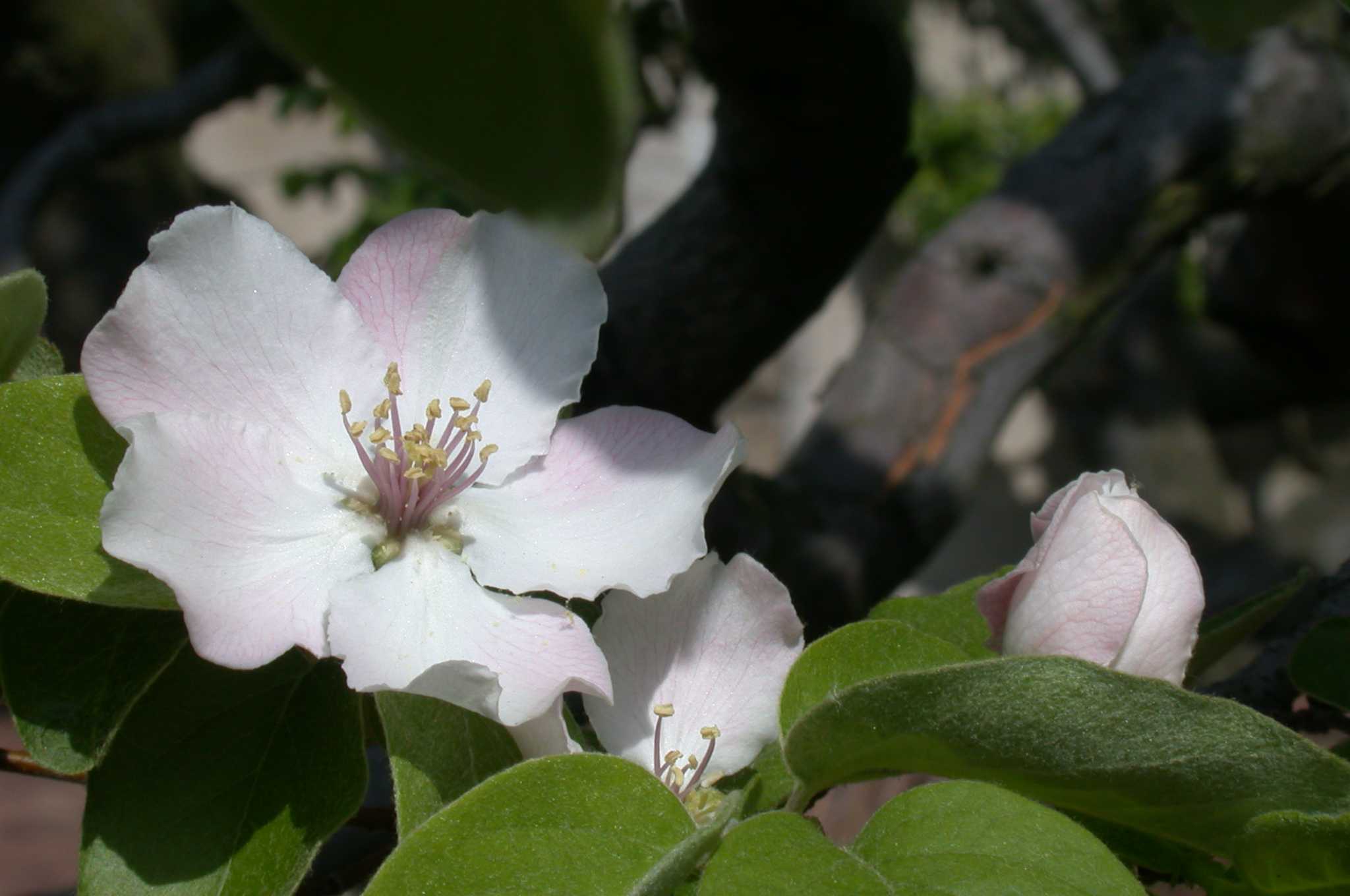
The second show comes in fall, when the fuzzy, yellow fruits come into focus among the branches. The fruits are ornamental, and they also recall bygone times. Quince was a popular ornamental and fruiting plant early in the 20th century. You can still come upon old trees that were planted decades ago, often the only surviving relics of gardens past.
For it’s beauty and flavor, the true quince warranted a prominent place in my book Landscaping with Fruit, available here.
Quince’s popularity goes back further still. Four particularly beautiful small trees grow in one of the recreated medieval gardens of the Cloisters in New York City. Each has its own small bed, with a wattle fence enclosing germander and other herbs that also were popular in those days.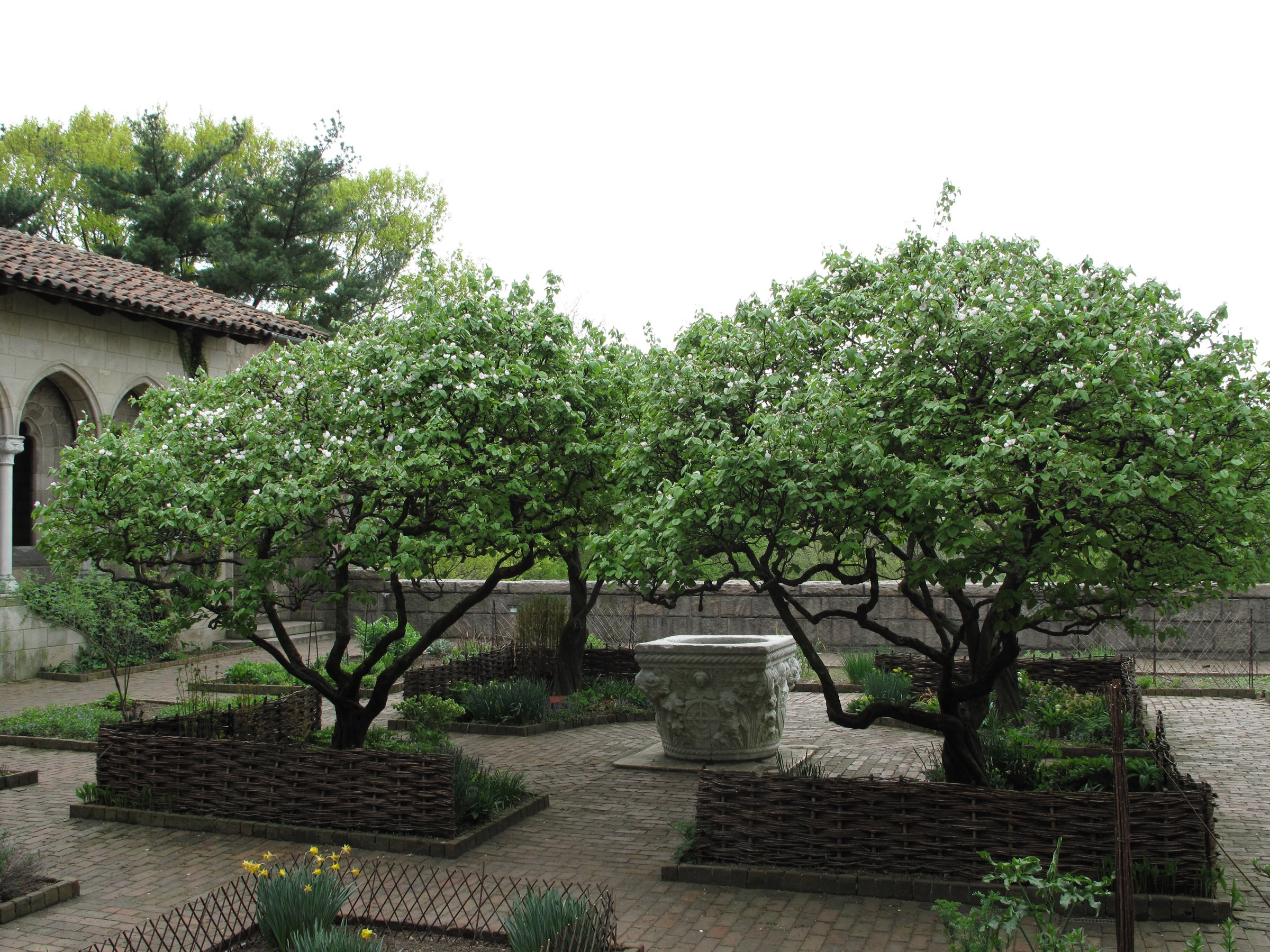


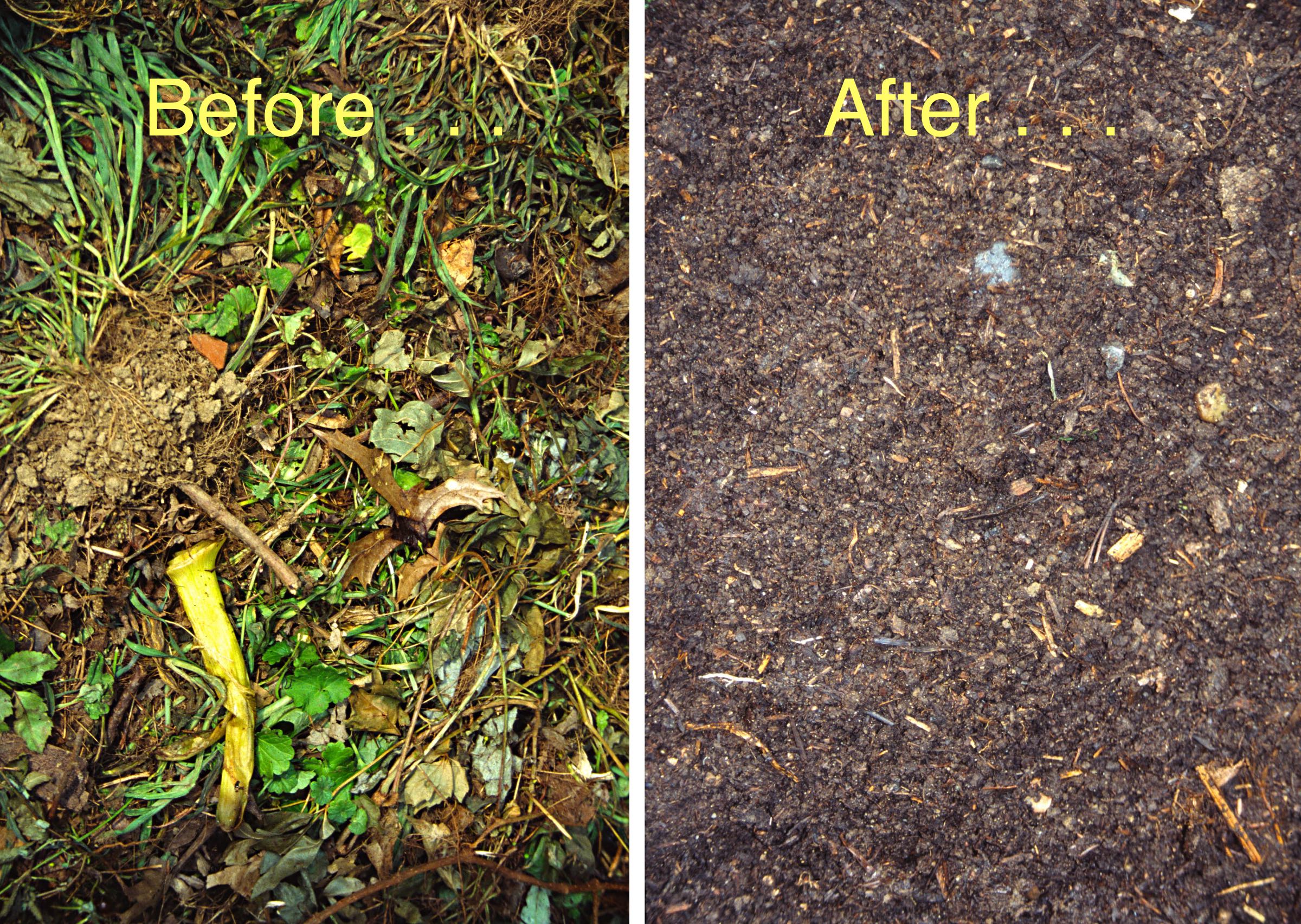
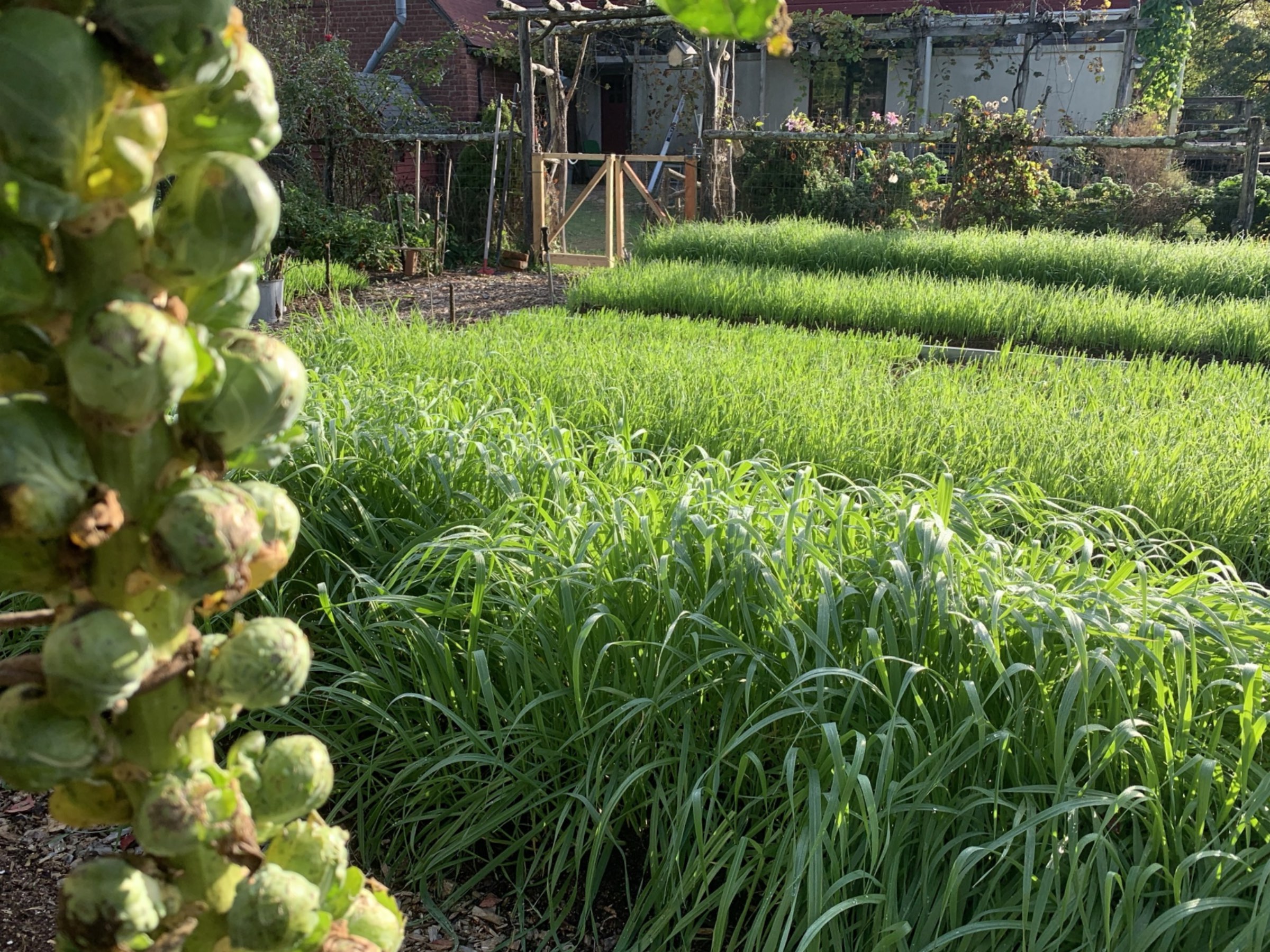
Thank you!
Having made over 10kg of quince jam (membrillo) separately from both tree quince and Japanese quince this year, I can confirm that both are very tasty and worth doing.
I loved seeing this arrive in my in-box this morning. I just wrote a piece on my Substack about our own ornamental quince and finding the quince of antiquity in our village.
Here’s a link if anyone’s interested.
https://verduravita.substack.com/p/cooking-with-quince?r=eb8na
And don’t forget to mention those wicked thorns! I have an orange blossom quince that was here when I bought my property 30 years ago. Beautiful in flower they also bloom along the stems. Even animals will not eat the bitter fruit. Sometimes get a few repeat blooms later in the season.
My aromatnaya quince is loaded with fruit this year and the scent is divine! My ten year old tree develops a little fire blight every year but I keep the damaged areas pruned out. I haven’t tried cooking my quinces, but some membrillo may be in order. I have bushels of fruit!
How does the fruit taste raw. (Sliced thinly)
Hi Lee. Great article. I grow all species of quince including 30+ cultivars of cydonia oblonga. I need to provide some additional information about oblonga. It will easily exceed 10’ under good growing conditions and the right cultivar. I have one 7 yo at 10’ now. I have also lived overseas where we had a very old quince tree at 30’ tall growing on the edge of a desert.
Thanks for the good info. Where do you grow all these varieties?
Hello Lee,
Once again, thank you for your offering and great info, beautiful pictures of Quince! One of my favorites… Mostly eating in paste or jam and enjoying the “old world” significance. Thank you for your article, I do not have a garden, or land to grow Quince but live vicariously through your photos.
Glad to offer some ersatz greenery in your life.